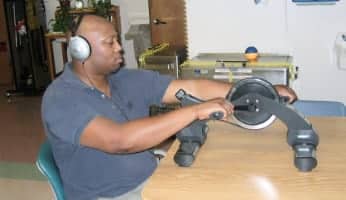Beth’s Driving Success: Achieving Independence with IM Program

Home - Testimonials - Pediatric Testimonials - Beth’s Driving Success: Achieving Independence with IM Program

Beth’s Driving Success: Achieving Independence with IM Program
Beth is a 17-year-old girl with Cerebral Palsy.
She is active in school events. Beth also travels to sporting events to report for the school newspaper.
The Goal: Get a Driver’s License
Her goal is to be able to drive and participate in driver’s education next school year. Beth had already had a driver’s evaluation, but it hadn’t gone well.
She had difficulty coordinating the hand controls to operate the gas/brake and steer the vehicle. She couldn’t steer well, and had trouble staying in her lane. She needed a lot of additional time to make independent driving-based decisions. Her on-road reaction time was not acceptable.
Based upon the behind-the-wheel evaluation, it was recommended that Beth not operate a motor vehicle, and that she wait 2-4 years for re-evaluation.
Training with IM
Beth’s occupational therapist recommended she go through the Interactive Metronome (IM) Program to meet her goals.
IM was modified for using hand controls, and Beth performed all tasks while sitting down, as if she were in the position of driving. She was shown to have “extreme deficiency” for all tasks.
The Interactive Metronome program began with three phases spread out over two days, so that Beth could learn the reference tone, guide sounds and visual training.
At first, all her movements were linear, rigid and jerky. Her startle reflex occurred twice, and she was only able to show minimal movement with her tasks.
Beth and her mother were instructed to complete a home stretching program and upper body exercises that matched the movements she’d have to make while driving.
Beth also observed her mother driving from the front passenger seat, to gain better understanding of the complexities of driving.
Additionally, she was instructed to tell her mother when to turn at a four-way stop, when it was OK to merge into passing and turning lanes, and to judge when to make a turn into oncoming traffic.
On Beth’s last day, after 15 sessions, the LFA was administered and her evaluation showed her scores improved greatly; so much so that her occupational therapist recommended she receive another driver’s evaluation.
Retaking The Driving Test
The driver’s rehab specialist was unwilling to retest her so soon. He stated that there was “no way” she could have made any significant improvements in such a short period of time. After advocating for Beth and explaining the Interactive Metronome, he agreed to re-test her.
She passed!
The next year, Beth participated in driver’s education class at her school and then was ready to take her driver’s test.
Her mother brought her to a “tune-up” IM session beforehand. Beth and her mother wanted to make sure she didn’t need any further treatment with IM.
Now a Licensed Driver
A year post-treatment, her average IM score for hands was 40ms. After one session, her Task Averages returned to 15ms. Beth went on to pass her driver’s test.
She is now a licensed driver.
Traditional therapy and other therapists had given up on her. However, with the use of the Interactive Metronome, Beth was able to succeed and accomplish her goal.
Michele Santer, MOT OTR/L
HealthSouth Western Hills Regional Rehabilitation Hospital
Parkersburg, WV




